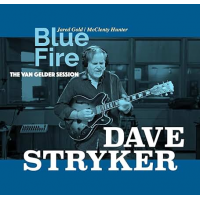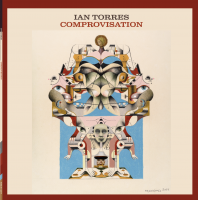Home » Jazz Articles » Album Review » Marc Bisson and Katt Hernandez (Bop Ants): Seven Gingambobs
Marc Bisson and Katt Hernandez (Bop Ants): Seven Gingambobs
The disc begins with some aggressive and noisy duelling that transforms into a rich textural exploration after about a minute and a half. The second piece offers a fascinating variety of detailed small sounds and intermittent soloistic violin bursts that beg to be immediately re-examined after rapidly spanning almost ten minutes without a single moment of tedium. Bisson's playing finds its creative peak during this piece, with effective use of quiet sounds and rapid transitions between different techniques, mildly hinting at Hans Tammen's extraordinarily brilliant "endangered guitar" work. Throughout the disc, for the most part, and particularly here, he is able to avoid the dense and tasteless assaults that are commonplace among "experimental" guitarists. There is an especially strong sense of sympathetic interaction on this piece when Hernandez mines her vocabulary of extended techniques to match Bisson's abstraction, yet the two musicians also seem closely connected when Hernandez switches to a more conventional technique, as she consistently spares us the distractions of melodic and rhythmic cliches in favor of jagged squiggles and smears.
The third piece is certainly the disc's highlight, and the only piece that caught my attention during an initial listen to the disc. There is a consistent mood created by focused long-tones with a raw, distorted, droney character and strong emotional resonance that I associate with "The Dew Line" by New Zealand's Gate. Hernandez doesn't avail herself of distortion like Bisson, but her lines here have an edgy, penetrating quality that functions similarly. The piece becomes extra-special when it seems to die out, but instead continues for another two minutes of magically restrained violin tones made with only slight bow pressure. Bisson adds a few tiny, quiet high-pitched notes at the end that are extremely beautiful and give the piece a sense of closure. The final track on the disc also makes use of droney long-tones, but with a very different mood centered around Bisson's rhythmically aggressive and active playing.
The fourth track contains Hernandez's least interesting playing, with a good deal of aimless plucking, and the fifth track contains perhaps her most inspired playing, with exciting ideas flying off her bow at every turn, to the point where it sometimes feels like Bisson is getting in the way of a monster violin solo, although there are points of equal interaction. The influence of Mat Maneri (she's taken a great deal of inspiration from her associations with the Maneri family) is particularly strong in this piece, with hesitant phrases and dynamic shifts that keep me on the edge of my seat. She tends to make her pitch slide around much more wildly than Mat Maneri though, giving a greater sense of vigorous abandon. Overall, a nice disc, and Hernandez is a young violinist who shows the potential to develop into a major voice in experimental violin improvisation and join the ranks of Mat Maneri, Mari Kimura, Malcolm Goldstein, and Takehisa Kosugi.
Personnel
Album information
Title: Seven Gingambobs | Year Released: 2002 | Record Label: Unknown label
Tags
PREVIOUS / NEXT
Support All About Jazz
 All About Jazz has been a pillar of jazz since 1995, championing it as an art form and, more importantly, supporting the musicians who make it. Our enduring commitment has made "AAJ" one of the most culturally important websites of its kind, read by hundreds of thousands of fans, musicians and industry figures every month.
All About Jazz has been a pillar of jazz since 1995, championing it as an art form and, more importantly, supporting the musicians who make it. Our enduring commitment has made "AAJ" one of the most culturally important websites of its kind, read by hundreds of thousands of fans, musicians and industry figures every month.
















